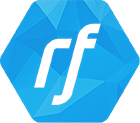About the project
I worked with the mobile team in Watson Health as the UX designer and user research to help deliver an iPad application which would allow child welfare investigators to complete case tasks while onsite with clients. Previously these couldn't be completed unless they were on their desktop back in the office.
Our team was made up of 4 designers in our studio and we worked on the UX and UI deisgn, user research and testing, prototyping of our designs and then worked with engineers to implement our designs.
The entire design process is based around the IBM Design Language and working with an agile development team. This process keeps users at the heart of the lifecycle and would involve constantly validating our ideas with them.
My role
I led the UX design and user research of the project. I worked with the design team lead, product manager and engineers throughout the project to conduct user research, analyse the results and then create users flows, run design workshops, sketch and wireframe ideas and then validate them with the team and users.
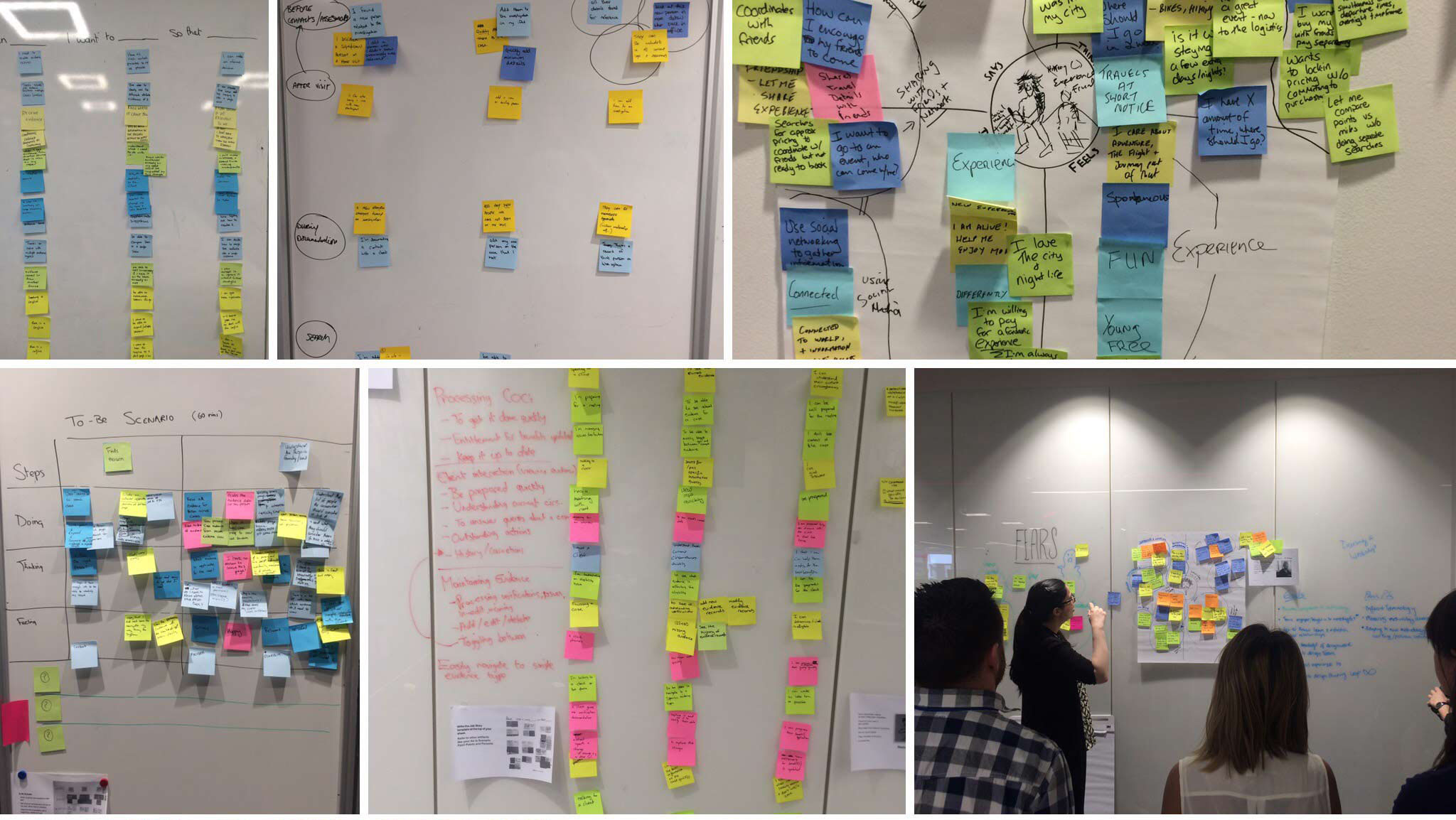
Project kickoff and our hills
Offering managers in IBM conduct early market and user research and then work directly with design to develop a direction for the offering that we want to provide. This involves bringing the full product development team together and running workshops to understand our potential users, their current pain points, gaps in the market and then start ideating on what we can deliver in our product to address these needs.
The main output of the early workshops is the Hills. Our Hills would be our guiding star in the design phase of the project to make sure we had the users need at the centre of our designs. They define a clear offering we're going to deliver to the user to create a user experience that will help them in their daily workflow.
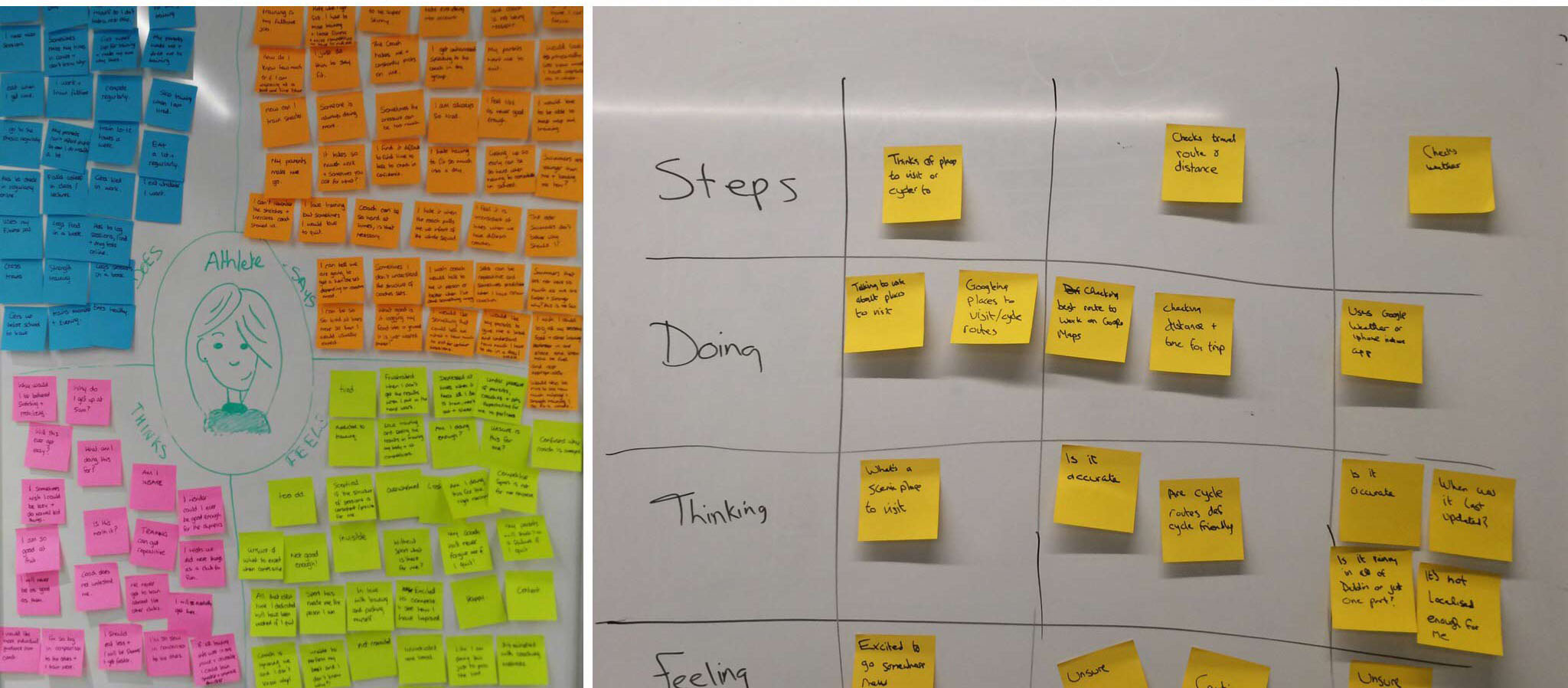
Addressing the users needs
Child welfare investigators work a large percentage of their time on the road and onsite with clients. The focus of the project was to deliver an iPad application that would allows them to carry out the most common tasks they complete such as:
- Getting an overview of the case and who the maltreater and victim is
- Completing assessments of the visit
- Documenting the entire visit in detail
- Having a checklist to ensure they complete all necessary tasks
- Create safety plans for the client

The discovery and design phase
We had access to sponsor users which allowed us to constantly ask them them how they conduct their jobs and this helped to drive a lot of our design decisions. We had to also work with our product development team to try find new innovative ways for them to complete tasks and make sure they would easily fit into their workflows.
We broke each part of the design into sprints and ran design workshops daily and iterated through sketches and wireframes rapidly and when possible conducted usability testing with our sponsor users.
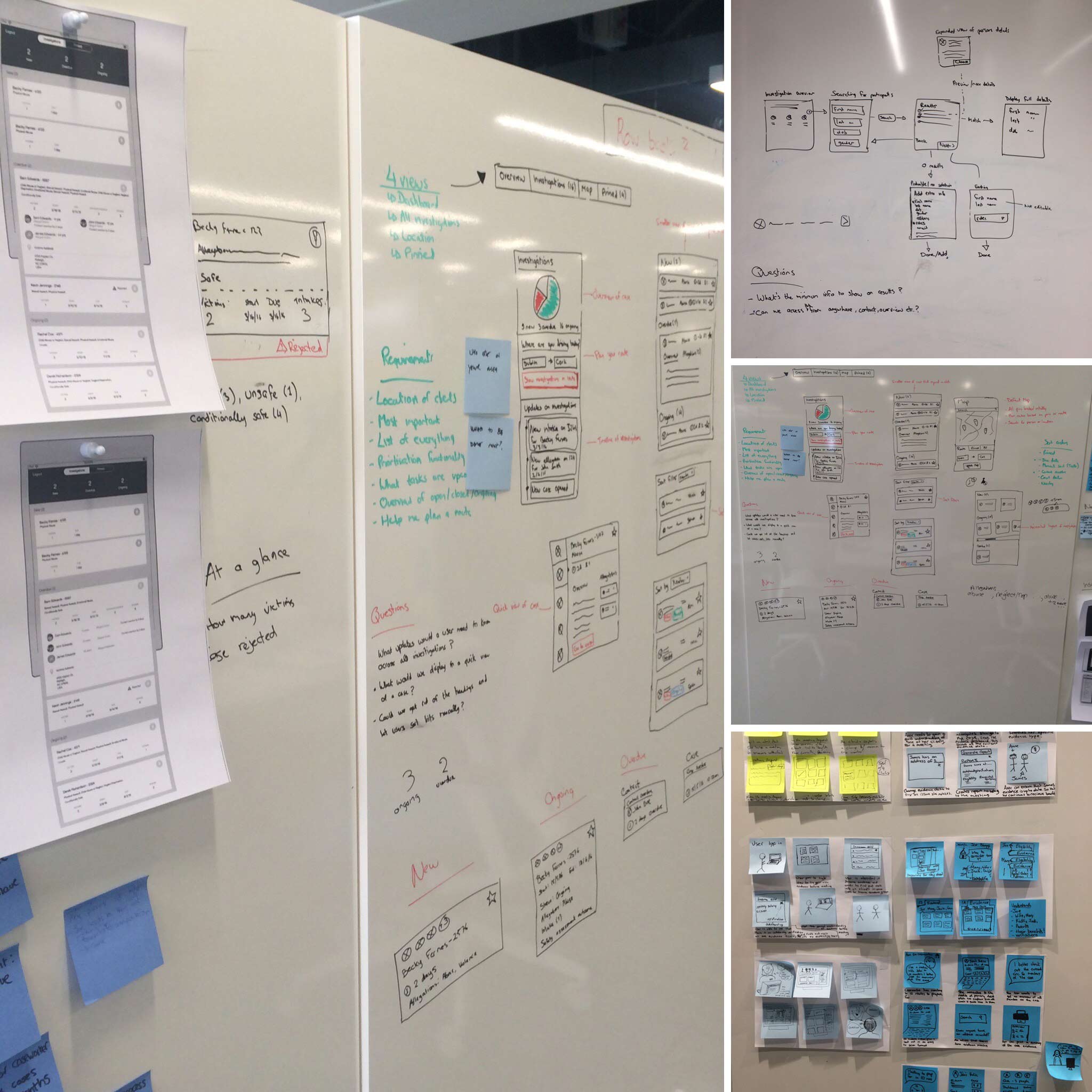
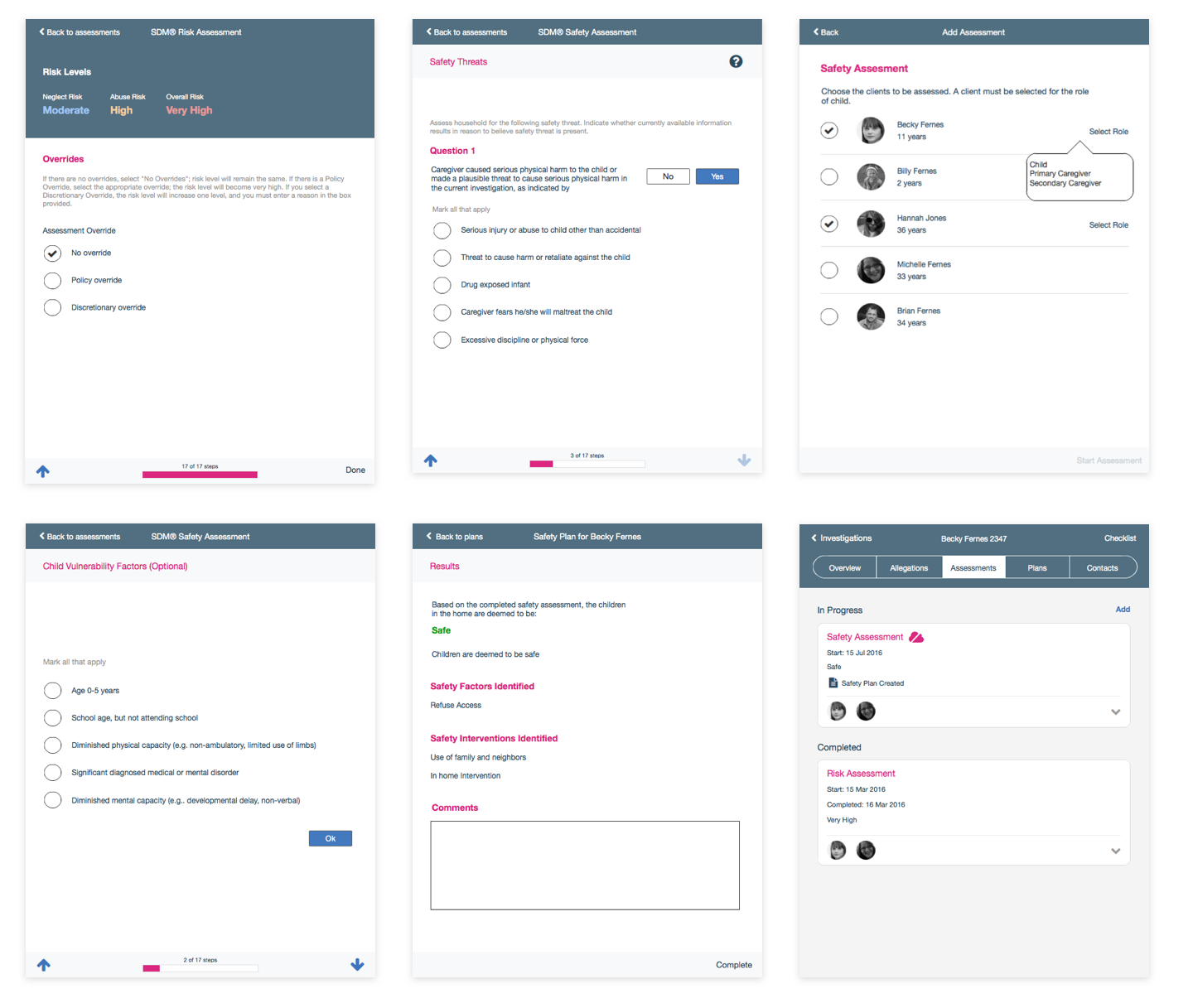
Prototyping and implementing
We worked heaviliy with Invision to create prototypes of our wireframes which we used to do remote usability testing throughout the process. We also created animations to show engineers how to implement some complex parts of the designs that static specs couldn't show.
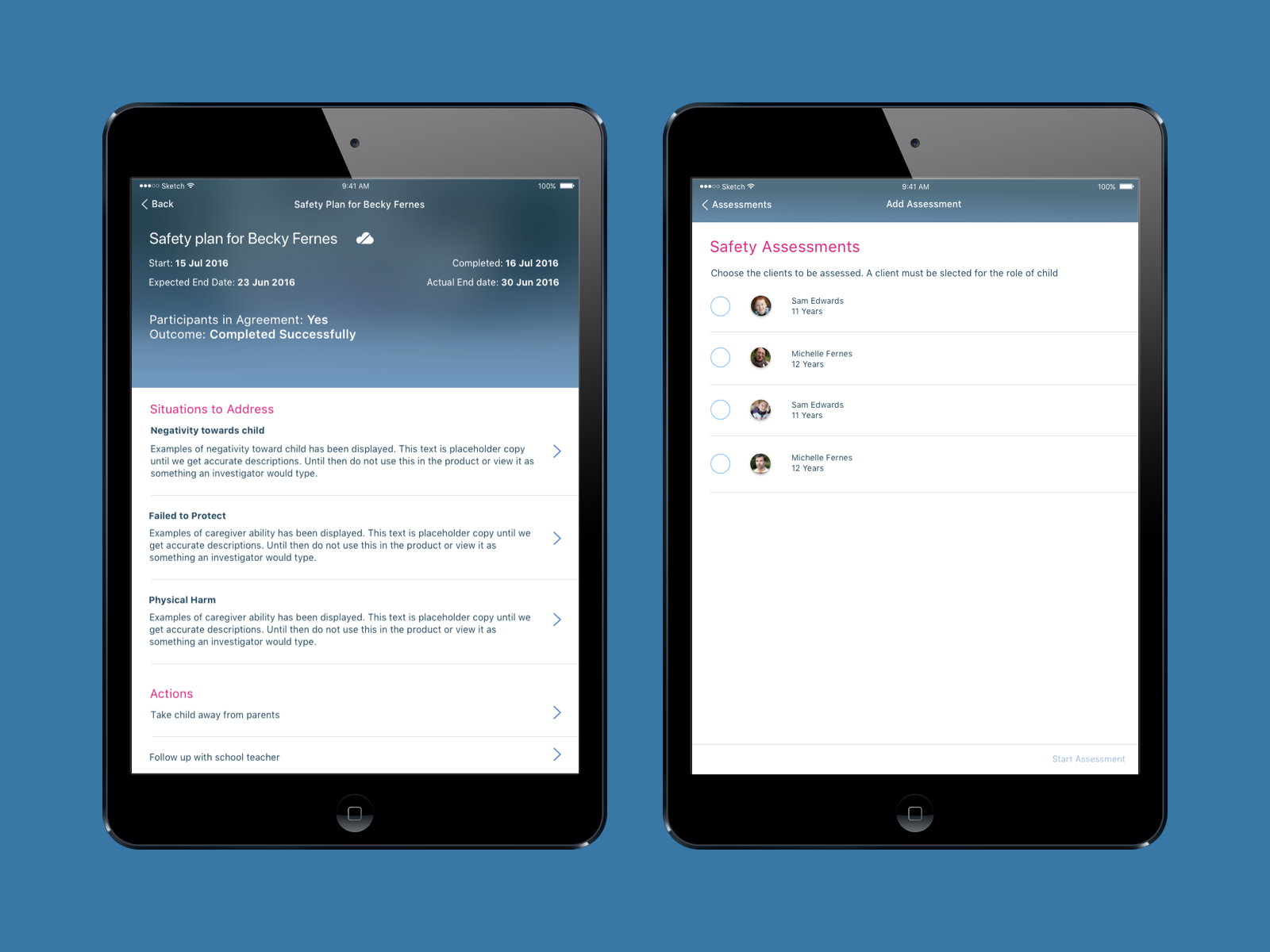
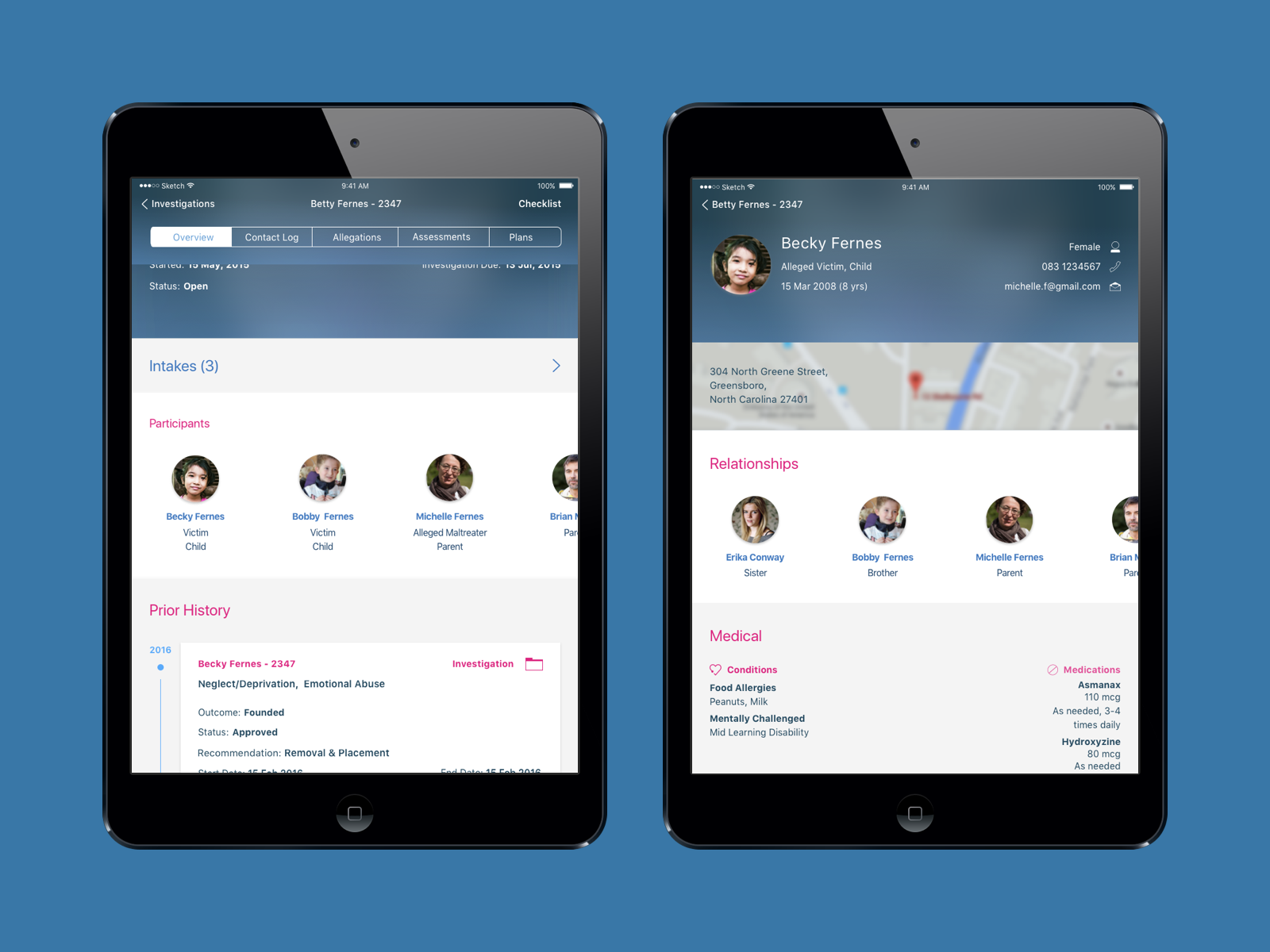
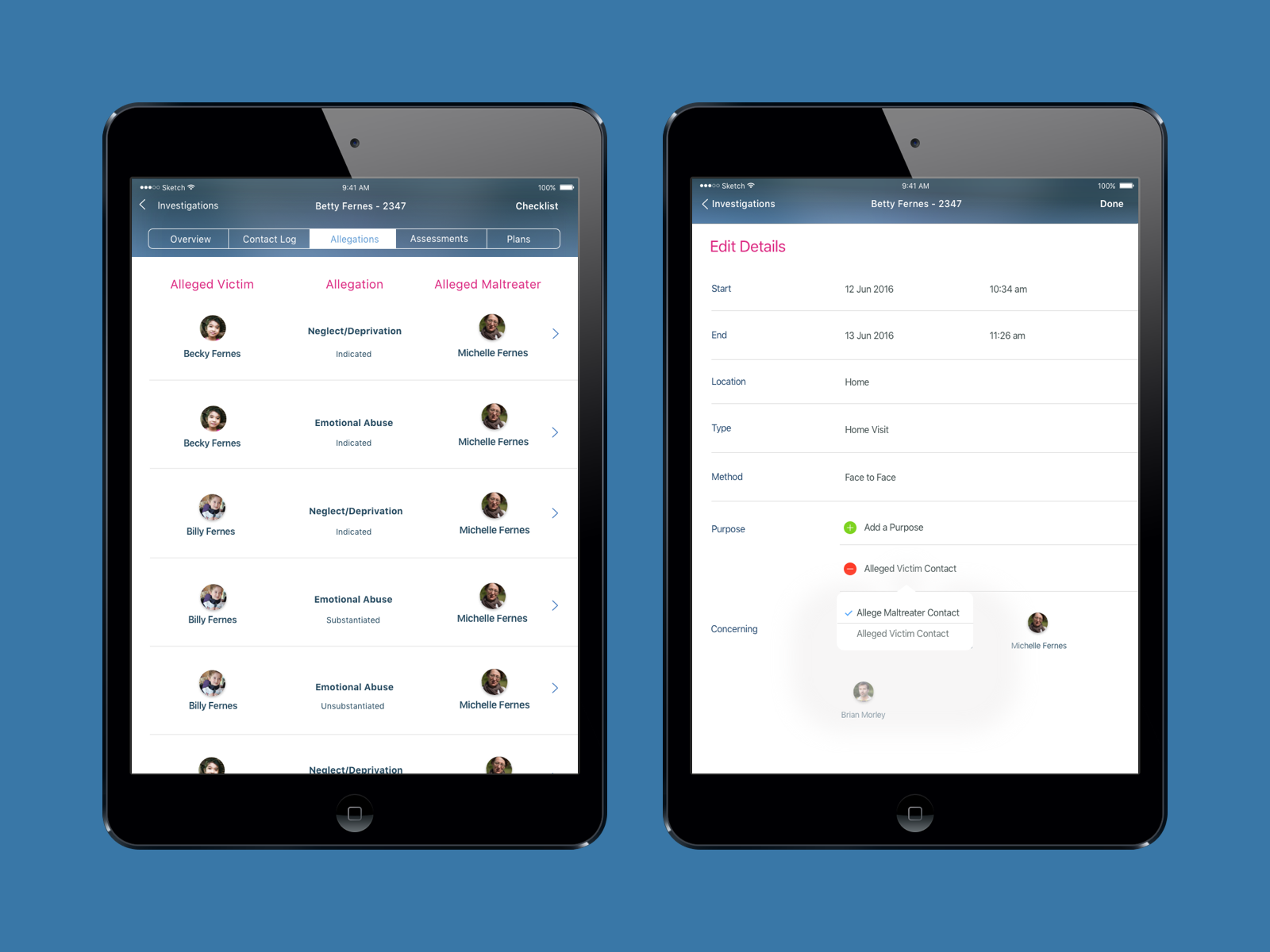
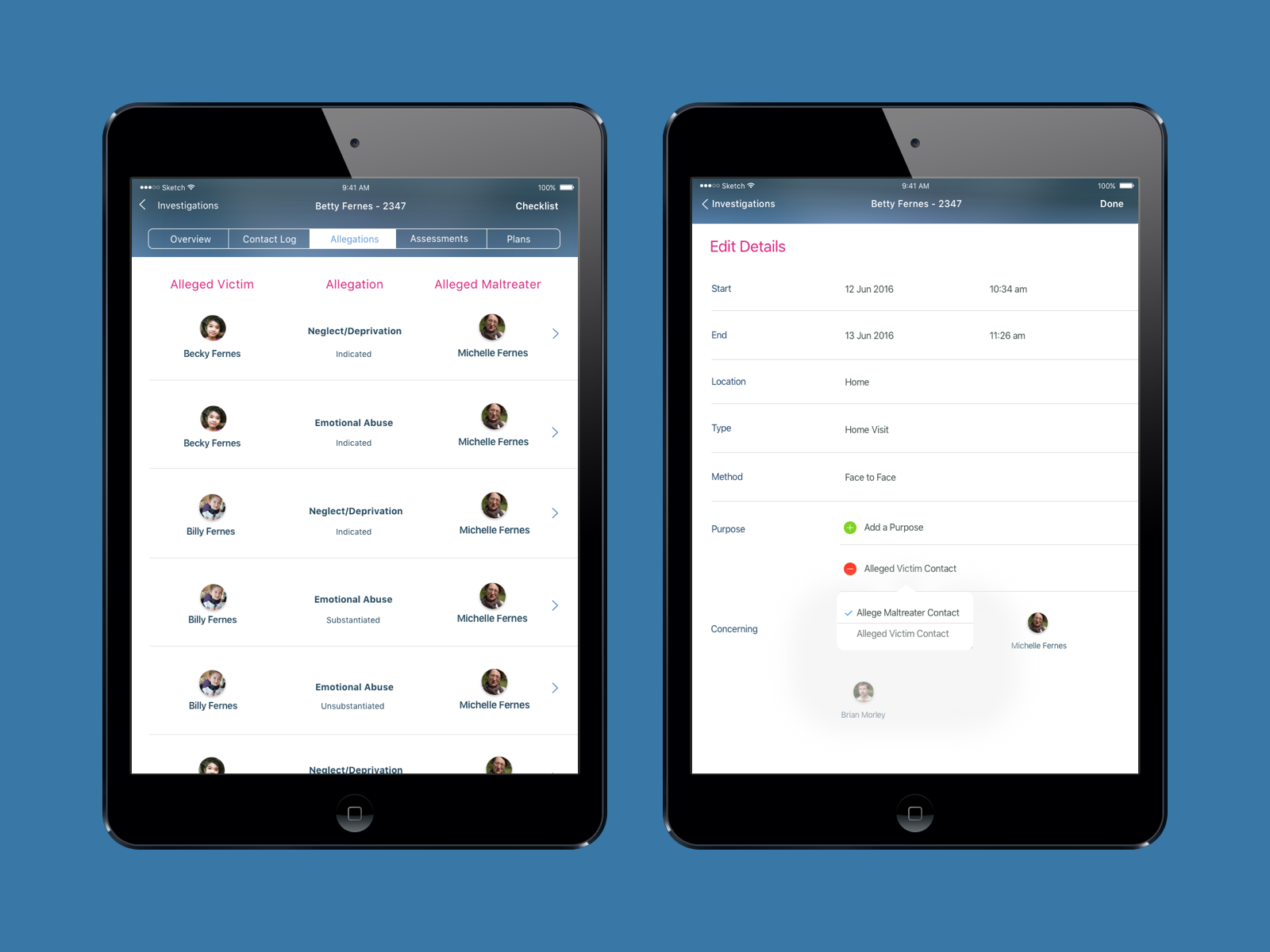
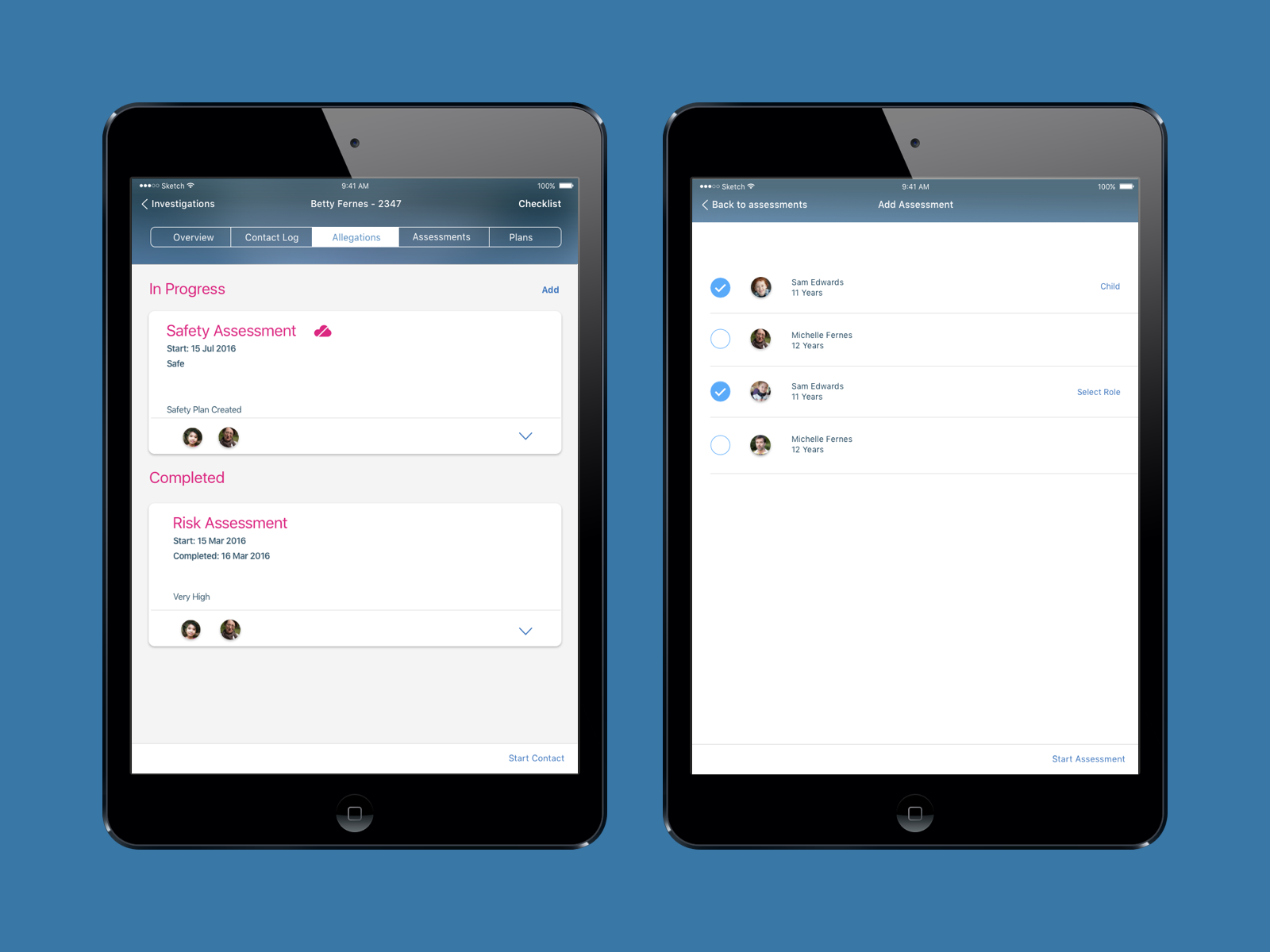
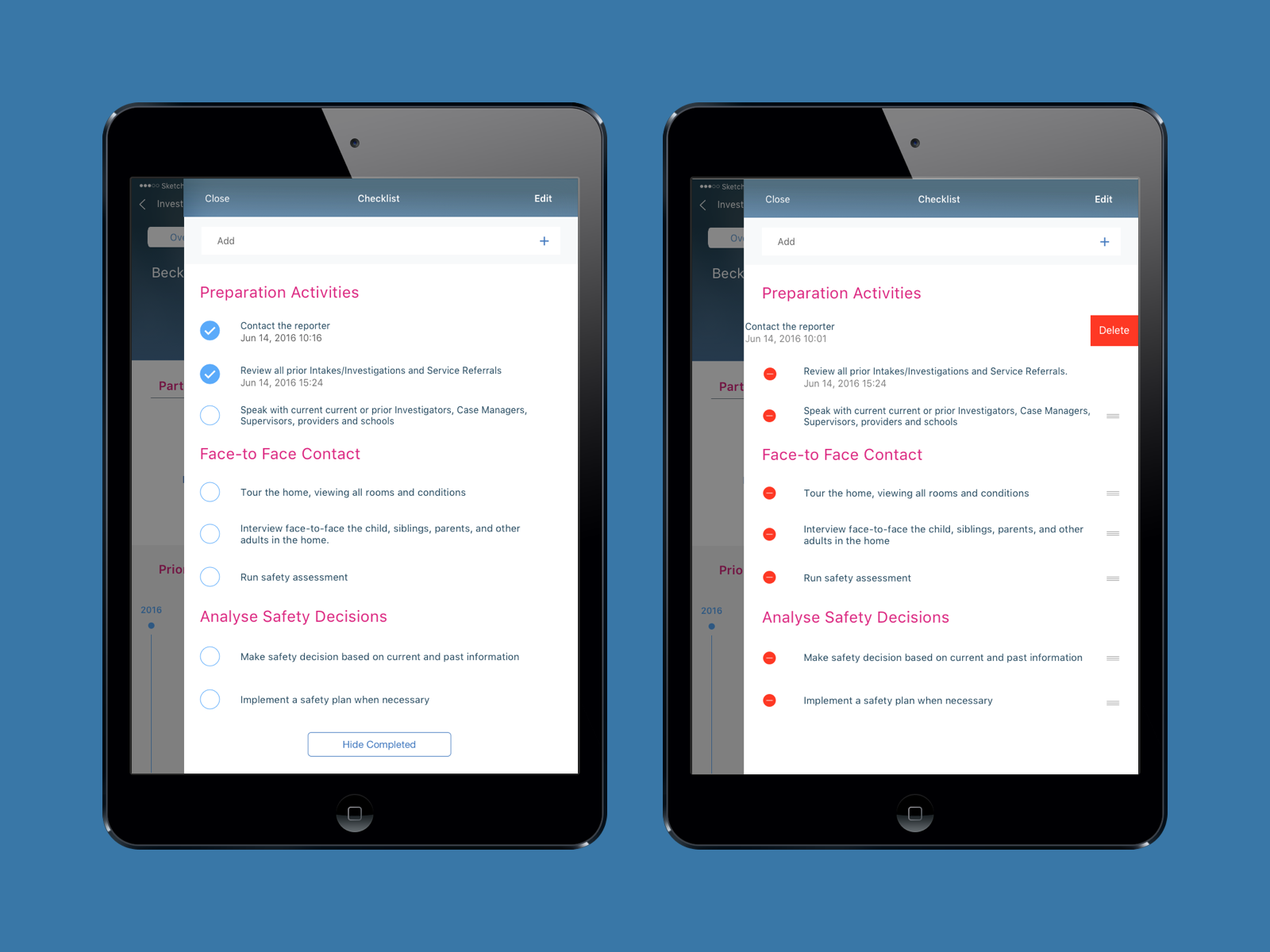
Credit to Donnacha Carroll for the video animation.
Reflection
The project was launched around the time I finished working in IBM. By the time I finished up we had created a strategy about how we could test the product to validate new concepts, make sure the overall experience of using the product was to a high standard and look for new ideas to use in phase 2.
Key learning from the project
- The use of a storyboard was a huge help in getting buy-in from key decision makers in the project and kept a strong user focus early on. Later in the project though it became hard to keep it updated as we learnt more about the users on calls during usability testing. In future I'd like to figure out a way to make it easier to keep updated with the latest insights
- There was multiple designers on this project working on different parts of the experience which were managed by the lead designer. He challenged us to own the vision of each part but I feel that he should have been part of maintaining that overall vision which is key for a lead designer but then empowering designers to really focus on the experience of each part of the experience
